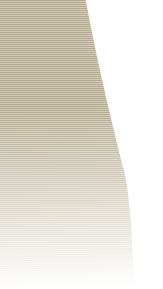A school media center and its program are great showcases for modeling connections between the school community and other information centers, especially local public libraries.
Before school lets out for the summer each year, I always encourage summer reading and participation in the public library’s summer reading program. I usually kick this off in the spring by participating in Frederick County Public Library’s annual bookmark design contest. I run off several copies of the template and encourage the students to enter. I collect the student entries myself, and personally deliver them to the public library. I also coordinate with the public library to have members of their staff come to my media center and give presentations on the summer reading program and to handout flyers and sign up applications. I frequently advocate for owning a public library card, and show the students both my local public card and my state library card. I often have the application forms available and show them how easy it is to obtain one of their own.
Another way I connect students with local and regional libraries is through my media center website. On my reading page, I have a link to our county public library, the public library for the nearby county we border, and SAILOR, Maryland’s Online Public Information Network.
As a member of MEMO (Maryland Educational Media Organization), I am a strong advocate for the Maryland Black-Eyed Susan Book Award Program. I order several copies of the nominated books each year, promoting and displaying them proudly. I encourage the students to read enough of them to become eligible to vote, and offer a pizza party for those who read a large majority of the books. To make it easy for the teachers in my school to help with all the record keeping, I create tracking sheets personalized for each class, flyers, and ballots.
I often include activities and information from our local public library in my media center activities. I visit the public library often and try to stay informed about what is going on there. I have established a relationship with the Teen services manager at the local branch in the community where I currently teach. I distribute flyers and pass along information about upcoming events to teachers and students through email and morning announcements. When I create pathfinders for teachers and classes, I am sure to include resources available from the public library. I also include contact information for the public library in my research handbook, so students can access the information quickly. When classes are into conduct research, I remind them that additional databases are available through the public library.
I am continually looking for further ways enhance my media center’s connection with the local public library. I am especially excited about an opportunity I have started working on this spring and will take place throughout the next school year. I volunteered to work with the Teen Services Director of the local public library branch nearest my school to form lunch book clubs. After meeting together to discuss the idea, we have decided to separate the monthly clubs out by grade level and discussed some possible themes, authors, genres, etc. we would like to do with each grade level. The artifact linked above is a copy of some email communication between me and Mary Ann Foltz, the Teen Services Director for the Urbana branch, discussing the planning for next year.
Networking with other libraries in ways such as these has not only helped me grow professionally, but has also helped my students establish their own connections with the larger library community.
|


